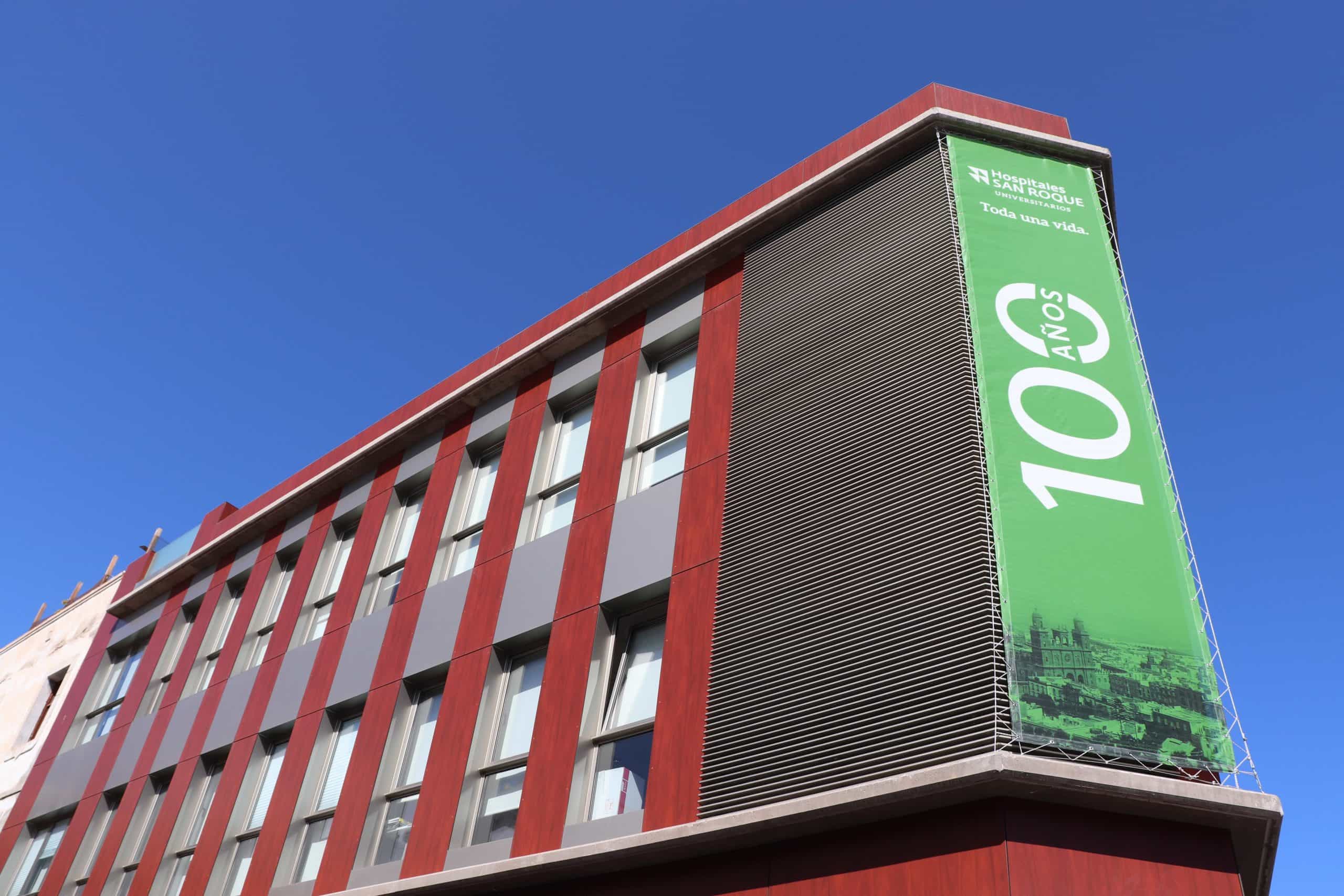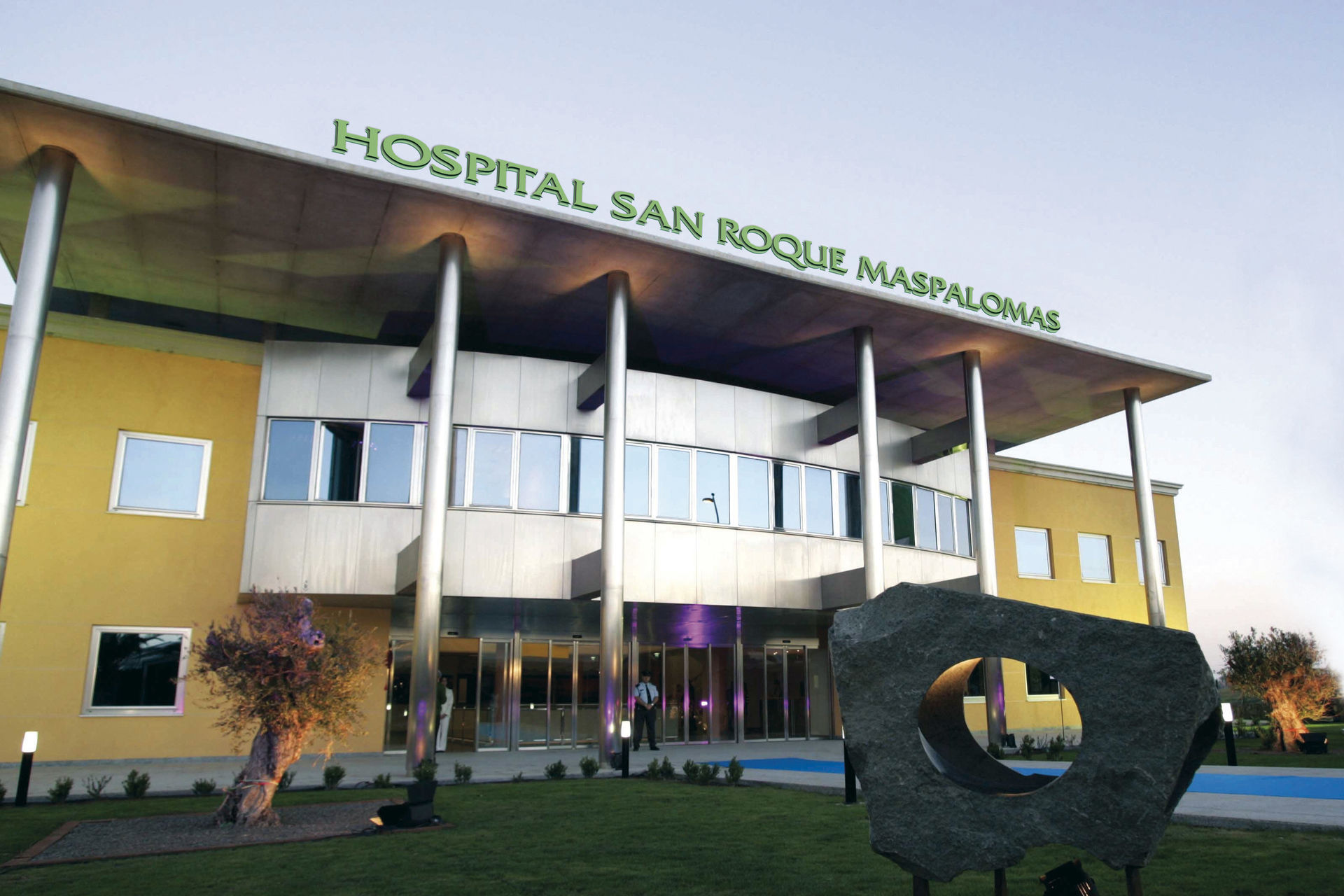Medical Specialties
Your health is covered at every stage
Lithotripsy Unit
The Lithotripsy Unit of the Hospitales Universitarios San Roque Urology Service offers all the technology necessary for the full treatment of any calculus or urinary lithiasis, whatever its size or location.
Urinary calculi can affect up to 12 percent of the population at some point in their lives, the peak risk being between 40 and 60 years of age; those who have suffered an acute attack have 50 percent chance of having another in the future.
Most small calculi or stones pass spontaneously, however, sometimes non-steroidal anti-inflammatory drugs, alpha-blockers or corticoids are required. For bigger stones (greater than or equal to 7 millimetres), or if the patient develops an infection or suffers incontrollable pain, special procedures are required for active removal. Nowadays, there are two special procedures: extracorporeal shock wave lithotripsy (ESWL) and endourological techniques. Most non-complicated calculi in the urinary tract are treated with ESWL, and the procedure is successful in over 90 percent in adults treated.
The Lithotripsy Unit of Hospitales Universitarios San Roque boasts a Dornier machine (model Sigma) which emits waves that can go through the skin, reach the calculus and fragment it with no need for incisions, invasive manoeuvres or hospital admittance. For this treatment to be the most effective possible, the patient must be relaxed and without pain; that’s why our unit has the support of the Anaesthesiology Service during the whole procedure.
However, there are calculi that, due to their size and / or location, require so-called endourological techniques, such as percutaneous nephrolithotomy and ureteroscopy. Both are minimally-invasive techniques and require general anaesthesia.
Percutaneous nephrolithotomy is used to remove renal calculi (e.g. staghorn calculi). This procedure involves entering the kidney via a small incision, then, an optic camera (nephroscope) is threaded in through the hole to visualize the calculus. The stone is broken up by the means of pneumatic lithotripsy or by a Holmium laser and the fragments are removed. In most cases, an external drainage and a short stay at hospital are required.
Ureteroscopy is used for uretheral calculi. It consists of introducing an optic camera inside the ureter through the urethra to visualize the calculus. The stone is broken up by the means of pneumatic lithotripsy or by Holmium laser and the fragments are removed. In rare cases, an internal drainage (Double J catheter) is required and no hospital admittance is needed. When fragmenting the calculus by the means of pneumatic lithotripsy, a rigid ureteroscope is used, and when the Holmium laser is involved, a flexible ureteroscope is used. With the use of the flexible ureteroscope, not only can we access the ureter but also any part of the kidney, being able to avoid percutaneous nephrolithotomy in certain cases.
Urinary calculi can affect up to 12 percent of the population at some point in their lives, the peak risk being between 40 and 60 years of age; those who have suffered an acute attack have 50 percent chance of having another in the future.
Most small calculi or stones pass spontaneously, however, sometimes non-steroidal anti-inflammatory drugs, alpha-blockers or corticoids are required. For bigger stones (greater than or equal to 7 millimetres), or if the patient develops an infection or suffers incontrollable pain, special procedures are required for active removal. Nowadays, there are two special procedures: extracorporeal shock wave lithotripsy (ESWL) and endourological techniques. Most non-complicated calculi in the urinary tract are treated with ESWL, and the procedure is successful in over 90 percent in adults treated.
The Lithotripsy Unit of Hospitales Universitarios San Roque boasts a Dornier machine (model Sigma) which emits waves that can go through the skin, reach the calculus and fragment it with no need for incisions, invasive manoeuvres or hospital admittance. For this treatment to be the most effective possible, the patient must be relaxed and without pain; that’s why our unit has the support of the Anaesthesiology Service during the whole procedure.
However, there are calculi that, due to their size and / or location, require so-called endourological techniques, such as percutaneous nephrolithotomy and ureteroscopy. Both are minimally-invasive techniques and require general anaesthesia.
Percutaneous nephrolithotomy is used to remove renal calculi (e.g. staghorn calculi). This procedure involves entering the kidney via a small incision, then, an optic camera (nephroscope) is threaded in through the hole to visualize the calculus. The stone is broken up by the means of pneumatic lithotripsy or by a Holmium laser and the fragments are removed. In most cases, an external drainage and a short stay at hospital are required.
Ureteroscopy is used for uretheral calculi. It consists of introducing an optic camera inside the ureter through the urethra to visualize the calculus. The stone is broken up by the means of pneumatic lithotripsy or by Holmium laser and the fragments are removed. In rare cases, an internal drainage (Double J catheter) is required and no hospital admittance is needed. When fragmenting the calculus by the means of pneumatic lithotripsy, a rigid ureteroscope is used, and when the Holmium laser is involved, a flexible ureteroscope is used. With the use of the flexible ureteroscope, not only can we access the ureter but also any part of the kidney, being able to avoid percutaneous nephrolithotomy in certain cases.





